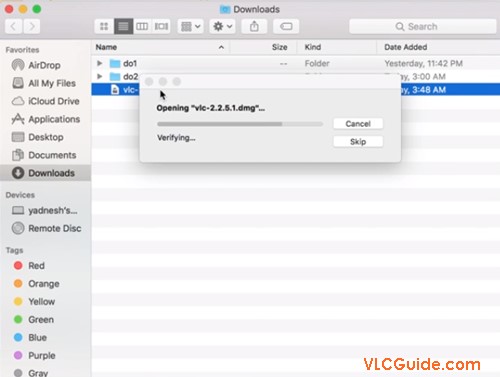

The dummy interface is basically nothing but output in the Terminal like most non-interactive CLI programs.Įnd result: /Applications/VLC.app/Contents/MacOS/VLC -I dummy

Once you find the working set of commands for your VLC CLI calls which produces your intended output, you'll probably want to use the dummy interface when calling VLC in your program/batch processing. A full list of available interfaces are at the VLC Interfaces wiki page. Now that you can call the binary right from the CLI, you probably will want to pick an interface so that you don't have the usual GUI popping up. If you don't want to use this whole path every time, you can make a symlink and edit your Bash PATH to point to this. Open Terminal and enter the exact file path to this, and you'll find the VLC binary executes: /Applications/VLC.app/Contents/MacOS/VLC. In this case, the VLC binary is located in the Contents/MacOS folder as file VLC.

Now you can browse what's actually inside. Open Finder, go to the Applications folder, right-click on the VLC app and then click Show Package Contents. GNU bash, version 3.2.57(1)-release (x86_64-apple-darwin17)Ĭopyright (C) 2007 Free Software Foundation, Inc.įirst, you need to locate the actual binary executable in the VLC Mac application package. Tested on: macOS HighSierra (OSX 10.13.6) $ bash -version lsregister -dump | grep -o "/.*$" | uniq lsregister -dump | grep -o "/.*\Google Chrome.app" | head -1 $ cd /System/Library/Frameworks/amework/Versions/A/Frameworks/amework/Versions/A/Support/ $ # /Frameworks/amework/Versions/A/Support/ Little complicated but won't launch the app. Volumes/External_HDD/Applications/GIMP/GIMP_v2.8/GIMP.app/ $ osascript -e 'POSIX path of (path to application "GIMP")' $ osascript -e 'POSIX path of (path to application "VLC")' Helpful, in case of that the VLC is placed in another directory rather than /Applications, such as /Users//Applications ( ~/Applications) or other directories. Here're 2 ways to find out the actual path of the app that launches with open command.


 0 kommentar(er)
0 kommentar(er)
